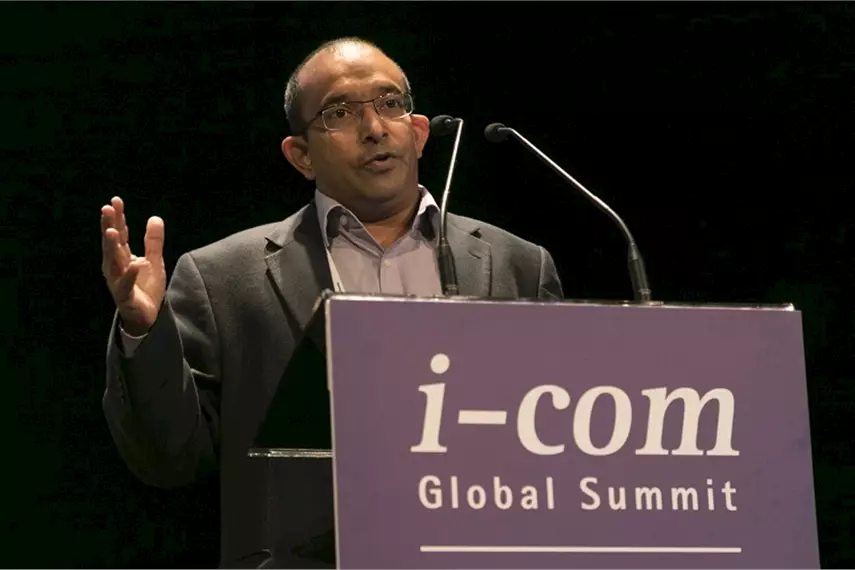Should India go local for the sake of it? - The Noel D'Cunha Sunday Column
The call for Atmanirbhar or self-reliant India is a step in the right direction. Still, the top brands which consumers prefer and the print industry relies on for their equipment needs, are all international players.
Is there an alternative? Read on...
23 Aug 2020 | By Noel D'Cunha
Campaign Asia-Pacific and Nielsen released Asia's Top 1,000 Brands report – and Samsung has once again been crowned the top brand, its ninth straight year winning the top slot.
India's Top100 brands were also announced. The not-so-good news for Brand India is: there are very few local brands that are visible in the list.
Like the rest of Asia, Samsung continued its dominance in India, too, for one more year. Nestle (second), LG (third) and Sony (fourth) retained their positions. The only local brand Amul made it to the top five, at the expense of the other local brand in the top five last year, Ola. Ola remained in the top 10 at number seven. Sandwiched between the two local players was global tech major Apple, at number six. Philips, Google and Big Bazaar completed the top 10.
The pandemic and subsequent China’s Galwan Valley incursion has resulted in a call for Atmanirbhar Bharat or self-reliant India.
The slogan has gained ground. But reality is a leveller. It is interesting to note that the next local brand on India's top 100 brands list comes at number 21, Patanjali. The brand could see a further dent in its ranking considering that it’s been in the news for the Covid cure (Coronil).
The other big development in Asia's Top 1,000 Brands has seen Jio slip five places from number 30 to 35. Since the study was conducted, the tech company from Reliance Industries has got a slew of investments from global tech players like Google (ranked nine) and Facebook (ranked 41) and also announced the launch of several local products such as JioMeet, JioGlass and a low priced smartphone. All this could result in a higher placing in next year’s rankings.
The China conundrum
Meanwhile there’s a clamour of getting rid of imported Chinese products, but getting rid of them in one shot will be near impossible.
Many pundits in the graphic arts industry as well as some others, concur.
My colleague ShapurKotwal from Autocar India, says, “One reason for this is the sheer volume of trade and dependence on Chinese part makers. Currently, anywhere between 10 and 20 percent of the parts in most Indian cars originate in some form or the other from China.”
China also leads when you look at the origin of imports, with up to 26% of our imported components and around four billion dollars worthof items sourced from there. For perspective, South Korea is second at 13%, followed by Germany at 12.
Kotwal says, “While Indian component makers mostly manufacture their parts locally, essential sub-assemblies and smaller components are often imported – things like circuit boards, screens, ECUs, sensors, wiring harnesses, connectors and even some important engine parts.” This is primarily because the Chinese have the scale to reduce the costs of many of these parts, and, in some cases, they also have manufacturing technology we don’t possess.
The print industry view about India vs China
A packaging company in Indore was of the opinion that barring a few raw material and software, most of its equipment are imported. “I think it has a lot to do with quality, maintenance and longevity,” he said, not wanting to be named.
According to the Indore-based packager, there are a few Indian packaging converting equipment manufacturers, whose machines do deliver quality. “But when it comes to speed and quality, consistently, demanded by our customers, we have to move to the premium segment,” he says.
BS Kampani, CMD of Young Concepts India, says, it’s an emphatic no such abrupt localisation. “We can boast of anything and we want to give an advertising binge or a sense of pride but in an environment where the benchmarking of technology is low and lack of consumer expectation is non-existent, it is tough.”
Our apprehensions of taking a middle path in setting the benchmark of technology could be because the benchmarking authorities have not mastered the best practices to adapt the topmost technology in the future.
Kampani cites the case of BIS for non-toluene inks, which he says, is definitely not at par with the Swiss packaging standard for food packaging. “Methyl isobutyl ketone (MIBK)/ Methyl ethyl ketone (MEK) are banned as they are highly toxic not only in packaging, but in ‘printing ink and print shop floors’ where your poor workmen and factory staff are exposed much more to the toxic solvents, compared to the packaging consumers day in and day out. Check their health and hands in the middle of their careers or end of their careers.”
A lot of inputs for the print industry come through the import route of hardware and raw materials in India, which has been able to set benchmarks of quality. “So I would not support localisation for the sake of localisation. A very senior global CEO remarked on plastic ban in India as being more politically driven than realistic driven by knowledge and alternatives. So if we ban something we should also be able to give alternatives through our technologist’s opinion rather than politicians.
Amitabh Luthra of Printers Supply Company agree with the Indore-based packager that the print industry depends on imported inputs, primarily because of the lack of availability of similar quality in India.
But once the Indian manufacturer ramps up their skill and processes to provide the same level of confidence in quality at par with the manufacturers from the rest of the world, like TechNova, Manugraph, Welbound, Pratham, Maxima or Autoprint, to name a few, and a good number of papers mills, have made in their own ways, there is no reason why we should not go local.
“However, this could be in collaboration with foreign manufacturers, which will provide them access to a much lower cost of manufacturing ecosystem,” says Luthra.
Local for the sake of local
While the call for an Atmanirbhar Bharat may be a step in the right direction, but should we jump right in, or do it in a phased manner?
Returning to Campaign Asia-Pacific– India’s Top 100 Brands; brandexperts state that while going local is the correct option, with only three Indian brands (Amul, Ola and Big Bazaar) among the top 20 in our ranking of India's top 100 brands, local brands in India have a long way to go if prime minister Narendra Modi’s vision of an Atmanirbhar Bharat (self-reliant India) is to be achieved.
MullenLowe Lintas Group’s chief strategy officer, S Subramanyeswar, states that a lot of the foreign brands in the top 10 have a lifetime share with consumers in the country, not just market share.
The idea of Atmanirbhar, in Subramanyeswar's mind, is to identify and promote brands and businesses that have the potential to scale up and be globally competitive, not to secure protection from competing with international brands in the domestic market.
PoranMalani, director of operations at S4 Capital India, says that while the policy of Atmanirbhar Bharat has been brought about and accelerated due to Covid, the trend was to look local long before that.
"It was about re-designing supply chains and production and not rely[ing] so much on the intra-national organisations which have taken a hit over the last five years," Malani says. "This has been made more and more acute during this crisis, it is now of strategic importance to build self-sufficiency where possible in as many areas as possible.”
Malani gives the example of Jio and how Reliance Industries, a local player in the market has looked to partner with global brands by getting investments from Facebook and Google and collaborating to improve its products.
MA Parthasarathy, CEO of Mindshare South Asia, echoes Malani’s point of view and adds that Indian brands will have to work toward making a difference in customers' lives in order to be among the top brands, rather than just resting on the laurels of being local.
Reader Reaction

S Subramanyeswar, chief strategy officer, MullenLowe Lintas Group
“I guess the Indian consumer has come of age and is smart enough to follow her own will instead of conforming to social expectations as self-reliance. She’ll choose the one that gives her the best solution—value for money and value for experience combined. A lot of international brands aren’t just imported marketing constructs. They’re part of the cultural fabric of this country. Think of Surf Excel. Think of Colgate. Think of Maggi. And think of their relationship capital with the Indian audience. They have a lifetime share and not just market share. Who would you buy against them?”

Poran Malani, director of operations at S4 Capital India
We must look at where we can compete locally and where we need collaboration. Jio is a great example now. It’s a globally rated brand but even it recognises the need to collaborate with the world’s best. Our local brands must be encouraged to increase R&D, to improve the products so there is no consumer sacrifice on quality when it comes to choice. If Indian brands are protected and promoted for the sake of being local, the country and its consumers will suffer at the end of the day.

MA Parthasarathy, CEO of Mindshare South Asia
“With a complete portfolio that ranges from devices to cloud, Jio has transformed the way Indians think, work, live, and are entertained. In a category that is characterised by dog-eat-dog fights fought on conventional value propositions, Jio believed in giving before asking. It may even inspire a Jio in every part of Asia and beyond. Whether a brand features in the top league or not should always be measured by how many people’s lives it has impacted positively. From that count, Jio could be the brand of 2021.”
(Source: Campaign APEC and Campaign India)











 See All
See All